The content of the article
Scientists serpentologists carry a noisy adder to the family of African vipers. This species can rightly be considered the most dangerous among other venomous snakes on the planet.
It is this snake that most often represents a threat to humans. During the attack, she bites the victim, and in most cases it is fatal. That is why this reptile is considered the most poisonous and deadly.
It inhabits almost the entire African continent, but most often it can be found in southern Africa near the Sahara. The exceptions are the central regions of Africa. The reptile is also found in southwest Asia in the south of the Arabian Peninsula and in Saudi Arabia. It is able to survive in any natural environment, except for the forests of the tropics, mountain meadows and sandy desert.
Appearance
This species of snake has a large body and a similarly thick tail. The head of a snake resembles a triangle, slightly flattened and flat, the muzzle at the end has roundings. Noisy adder on average can grow up to 1 meter. But the length of the largest snake can reach almost two meters - 1.9 m. In this case, the width of the snake body with girth is up to 40 centimeters with a body weight of 5-6 kg. Males of this species have a larger body than that of females. Above, in the area of the snake's head, ribbed scales grow. When opening the mouth of the upper jaw, two dangerous canines protrude up to 2-3 cm in length. These canines release a deadly poison for humans.
The color of the reptile is completely dependent on the natural features of the viper and its breeding sites. Usually upward snake body has a rich light brown tint. From nature, the color can also vary from red-brown to yellow and straw shades. At the bottom of the body there is a characteristic white or yellow color. Also at the bottom there are dark blotches. The same dark spots and stripes of black or dark brown color are located in the upper part of the serpentine body.The nature painted some representatives of this species with dense brownish and black spots, from which the color of reptiles shows a blackish or dusty brown color.
Reproduction and longevity
After a while, quite independent vipers appear. On average, in their litter can be from 20 to 60 snakes. However, there are times when a snake would breed offspring with more than 80 calves at a time. The length of the snake's body of newborn vipers can vary between 12-18 cm. Immediately after the birth of a snake, they are already independent and represent a mortal danger to humans.Baby vipers are able to live about two or three months without food after birth. In the wild, this reptile can live up to 12-15 years of age.
Diet and behavior
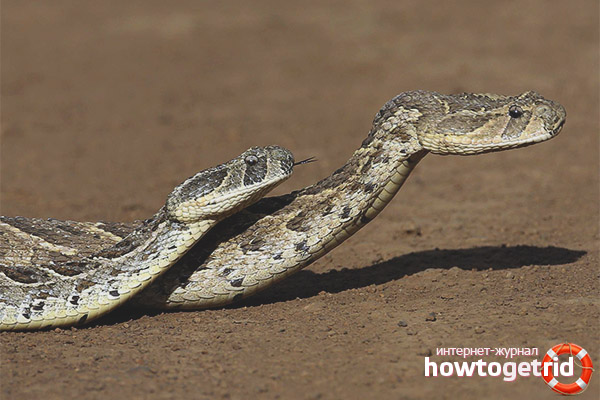
The nature of this snake can be called more phlegmatic. For a long time these snakes quietly lie on the surface of the earth, hiding in a pile of leaves, buried in sandy soil or sand. The movements of the snake are straightforward, and it wriggles only when it accelerates rapidly. The reptile can climb trees and swims well. If the snake is in danger, then in order to intimidate the enemy, its body begins to swell and its torso is bent. The snake takes an S-shaped stance and constantly makes hissing sounds to intimidate the enemy. A reptile is able to lash out on a prey or an enemy representing a potential danger with lightning speed. Throw a snake quite agile and can reach 40-50 cm in length. After the attack of a noisy viper, it is immediately followed by a bite of poisonous fangs.
Hunting and nutrition
On the hunt, these snakes creep out at nightfall. They are waiting for their potential victim sitting in the shelter. For hunting they use their natural, well-developed sense of smell.With the appearance of prey abruptly attacked her and dig in strong teeth. Snakes pursue their potential dinner until the animal dies from a poisonous bite or wound. The menu of this reptile includes small mammals, also birds, lizards and amphibians.
The venomous noise of the viper
Deaths generally depend on how strong the snake bite was. According to statistics, no more than 15% of easily bitten patients who have not turned for emergency help to a doctor die from the bite of a hissing viper.But if a snake bite has a more severe form, then the statistics of mortality among people grows up to 52%. However, such a high percentage of deaths indicates a lack of timely medical care and normal medical monitoring.
Video: Noisy Viper (Bitis arietans)



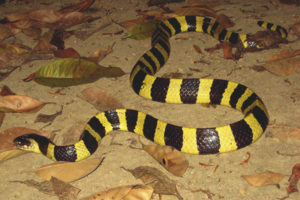

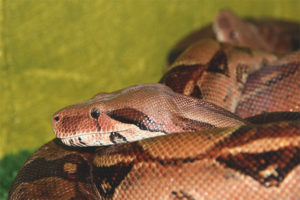
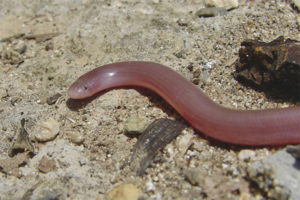
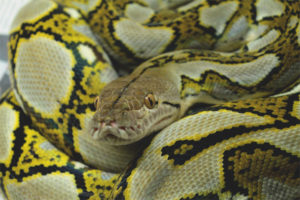
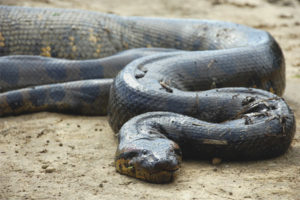
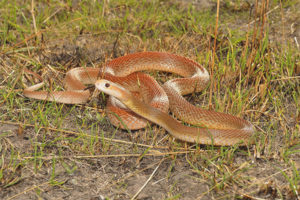
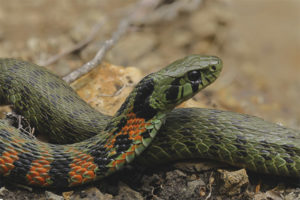
To send